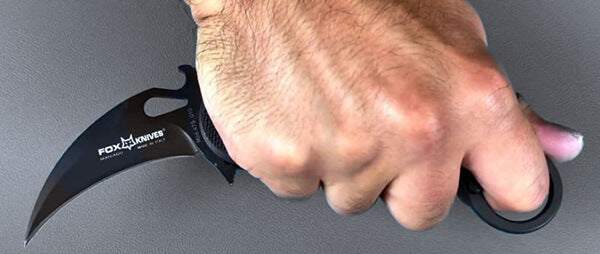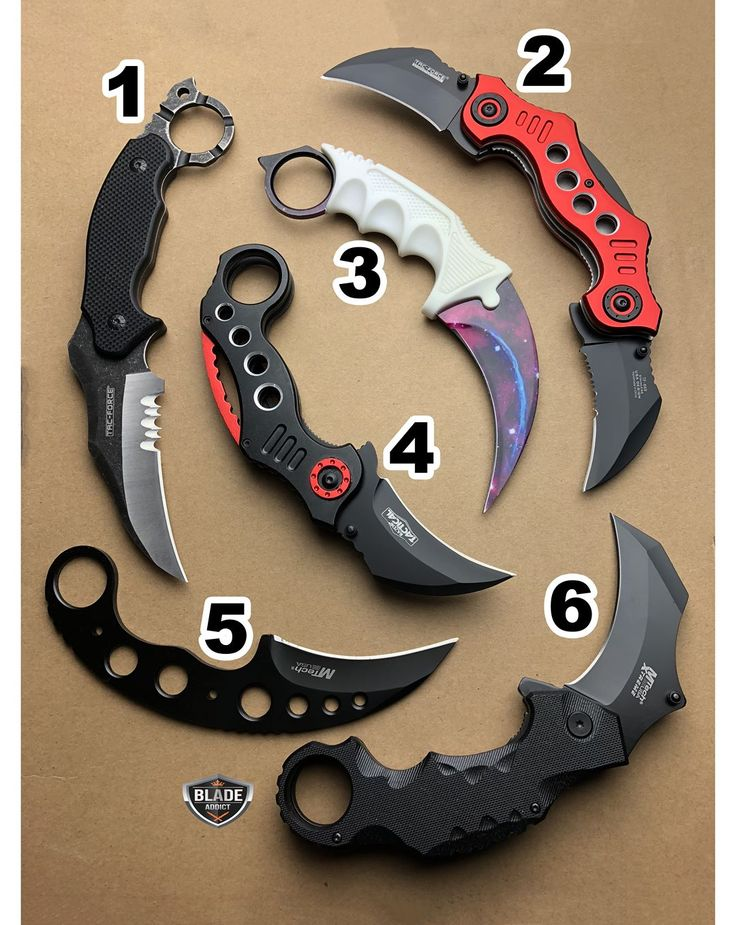
Mastering the Karambit: A Complete Guide to Techniques, History, and Self-Defense
Mastering the Karambit: A Complete Guide to Techniques, History, and Self-Defense

The Karambit, a curved knife with a rich history in Southeast Asian martial arts, has become a popular tool for self-defense, knife enthusiasts, and collectors. Its unique design, featuring a curved blade and a finger ring, makes it both functional and visually striking. However, the Karambit is not just a weapon; it’s an art form that requires skill, practice, and dedication to master.
In this article, we’ll delve into the history of the Karambit, its unique design, and the techniques you need to master it. We’ll also explore its role in self-defense, discuss its pros and cons, and provide tips for choosing the right Karambit for your needs.
The History of the Karambit
The Karambit, also known as the Kerambit, has its roots in the martial traditions of Southeast Asia, particularly in Indonesia and the Philippines. Originally designed as a farming tool for tasks like planting rice and cutting vines, the Karambit was later adapted for use in martial arts and self-defense.
The name "Karambit" is derived from the Indonesian word for "claw," reflecting its curved, claw-like design. The knife was traditionally used in the practice of Pencak Silat, a martial art that emphasizes weapon mastery alongside empty-hand techniques. Over time, the Karambit gained popularity worldwide, becoming a favorite among knife enthusiasts and self-defense practitioners.
The Unique Design of the Karambit
The Karambit’s design is unlike any other knife. Its curved blade, often compared to the claw of a tiger, is designed for tearing and ripping motions. The knife typically features a single-edged blade, with the cutting edge on the inside of the curve. This design allows for precise, controlled cuts, making it ideal for close-quarters combat.
One of the most distinctive features of the Karambit is the finger ring. Located at the end of the handle, the ring allows the user to secure the knife in their hand, providing a stable grip even during rapid movements. The ring also enables advanced techniques like spinning and flipping, which are central to Karambit training.
Basic Techniques for Mastering the Karambit
Mastering the Karambit requires a strong foundation in basic techniques. These techniques not only improve your dexterity and control but also prepare you for more advanced moves.
1. The Advanced Grip
The advanced grip is the starting point for most Karambit techniques. To assume the advanced grip:
- Insert your index finger into the finger ring, ensuring a snug fit.
- Wrap your other fingers around the handle, with your thumb resting on the side of the blade for additional control.
- Keep your wrist firm and your arm relaxed, allowing for smooth, flowing movements.
2. Twirls and Flips
Twirls and flips are essential for developing coordination and control with the Karambit. These techniques involve spinning the knife in different directions, using your wrist and arm to generate momentum.
- Forward Flip: Flick your wrist forward, allowing the knife to spin in a circular motion. Catch the knife by bending your index finger, ensuring the blade faces away from you.
- Backward Flip: Similar to the forward flip, but in the opposite direction. Flick your wrist backward and catch the knife as it spins.
- Sideways Spin: Spin the knife from side to side, using your wrist to control the motion. This technique is particularly useful for close-quarters combat, where space is limited.
3. Basic Flow Drills
Flow drills are designed to help you integrate basic techniques into a continuous sequence of movements. A basic six-count flow drill is an excellent way to get started:
- Slash: Begin with a diagonal slash, leading with your thumb.
- Backhand Slash: Bring the knife back in a smooth, arcing motion, slashing in the opposite direction.
- Puncture: Thrust the knife forward, aiming for a target (e.g., a striking pad or a piece of fruit).
- Reverse Puncture: Withdraw the knife and thrust in the opposite direction.
- Slash: Repeat the initial slash, maintaining a steady rhythm.
- Backhand Slash: Conclude the sequence with a final backhand slash.
Practice this sequence repeatedly, focusing on precision and control. As you become more comfortable, you can incorporate additional movements and variations.
Advanced Techniques: Spinning and Directional Rolling
Once you’ve mastered the basics, you can move on to more advanced techniques like spinning and directional rolling. These techniques add flair to your training and expand your versatility with the Karambit.
1. Spinning Techniques
Spinning involves rotating the knife in a continuous motion, using your wrist and arm to generate momentum. There are several types of spins you can practice:
- Backspin: Flick your wrist backward, allowing the knife to spin in a circular motion. Catch the knife as it completes the spin.
- Forward Spin: Similar to the backspin, but in the forward direction.
- Sideways Spin: Spin the knife from side to side, using your wrist to control the motion.
2. Directional Rolling
Directional rolling involves spinning the knife in specific directions, such as sideways, upwards, or downwards. These techniques are not only impressive but also practical for self-defense.
- Sideways Rolling: Start with the knife in the advanced grip. Flick your wrist to the side, allowing the knife to spin in a sideways motion. Catch the knife as it completes the spin.
- Upwards Rolling: Hold the knife vertically and flick your wrist upward, spinning the knife in a circular motion. Catch the knife as it descends.
- Downwards Rolling: Begin with a forward flip, then allow the knife to spin downward. Catch the knife as it completes the spin.
The Karambit in Self-Defense: Pros and Cons
The Karambit is a highly effective tool for self-defense, but it’s not without its limitations. Here are some pros and cons to consider:
Pros
- Precision and Control: The Karambit’s curved design allows for precise, controlled cuts, making it ideal for close-quarters combat.
- Disabling Techniques: The knife’s unique shape enables you to target vulnerable areas like tendons and joints, allowing you to disable an attacker quickly.
- Intimidation Factor: The Karambit’s appearance can be intimidating, deterring potential attackers before a confrontation escalates.
Cons
- Requires Training: The Karambit is not a knife you can pick up and use effectively without proper training. It requires a significant investment of time and effort to master.
- Ergonomic Challenges: The finger ring can make the knife difficult to draw quickly, especially in high-stress situations.
- Limited Reach: The Karambit’s compact design limits its reach, making it less effective in situations where distance is a factor.
Should You Carry a Karambit for Self-Defense?
Whether or not you should carry a Karambit for self-defense depends on your individual needs and circumstances. If you’re willing to invest the time and effort to master the knife, it can be a highly effective tool for self-defense. However, if you’re looking for a quick, easy solution, you may want to consider a fixed-blade knife or other self-defense tool.
Ultimately, the decision to carry a Karambit should be based on your lifestyle, training level, and legal considerations. Research local laws regarding knife carry and use, and ensure that you’re in compliance with all regulations.
Tips for Choosing the Right Karambit
With so many Karambit models available, choosing the right one can be overwhelming. Here are some tips to help you make an informed decision:
- Blade Material: Look for a knife made from high-quality, durable materials like stainless steel or carbon steel.
- Ergonomics: Choose a knife with a comfortable, ergonomic handle that fits securely in your hand.
- Size: Consider the size of the knife and how it will be used. Larger knives are generally more effective for self-defense, while smaller knives are better suited for everyday carry.
- Price: Karambits can range in price from under $50 to several hundred dollars. Set a budget and look for knives that offer good value for the money.
Maintaining Your Karambit
To ensure your Karambit remains in good condition, regular maintenance is essential. Here are some tips for caring for your knife:
- Clean the Blade: After use, clean the blade thoroughly to prevent rust and corrosion.
- Sharpen the Blade: Keep the blade sharp to ensure optimal performance. Use a whetstone or sharpening steel to maintain the edge.
- Lubricate the Pivot: If your Karambit is a folding model, lubricate the pivot regularly to ensure smooth operation.
- Store Properly: Store the knife in a dry, secure location to prevent accidental injury or damage.
Conclusion
The Karambit is a unique and versatile knife that offers a lot to both enthusiasts and self-defense practitioners. With its curved design and finger ring, it provides a level of precision and control that’s hard to find in other knives. However, it’s important to remember that the Karambit is not a quick fix for self-defense. It requires training, practice, and dedication to master.

Whether you’re interested in the Karambit for its historical significance, its role in martial arts, or its practical applications in self-defense, this knife is sure to provide a rewarding experience. So, grab your Karambit, head to your training area, and start mastering the techniques that make this knife truly special.
